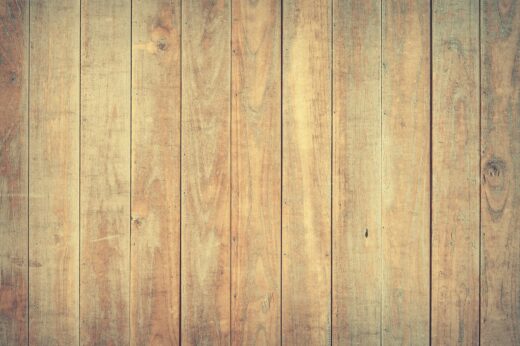Hardwood floor refinishing: investment or expense guide, Home renewal flooring style advice, Property decor help
Hardwood Floor Refinishing: An Investment or Expense?
26 September 2023
When homeowners contemplate various improvement projects, they often get caught in the dazzle of immediate visual enhancements. However, what slips through the cracks is the financial implication of such projects. Hardwood floor refinishing, a seemingly simple yet significant improvement task, is one such example. Homeowners are frequently torn between viewing it as an out-of-pocket expense or as a long-term investment that pays dividends over time. This article is designed to offer a nuanced perspective that helps you make an educated decision.
The Financial Aspects of Hardwood Floor Refinishing
The Immediate Cost
Materials: The financial layout starts with sourcing quality materials. These typically include specialized sandpaper, a variety of stains to match your decor, and high-grade sealers. On average, you can expect to shell out between $1.50 and $4 per square foot just on these materials.
Labor: The cost of labor varies depending on your location and the expertise of the professional involved. For a skilled craftsman, the labor costs could range between $3 and $5 per square foot.
Total: Adding up both materials and labor, the total cost for an average room—say, one measuring around 300 square feet—could oscillate between $1,000 and $2,500. This range can fluctuate based on the specific needs and conditions of your flooring.
Long-term Gains
The financial commitment to refinishing hardwood floors is often followed by a surge in the overall market value of the property. It is a one-time outlay that leads to long-term benefits. If you decide to list your property for sale in the future, a refinished floor serves as an attractive feature that can substantiate a higher asking price.
Why Refinishing is Worth the Investment
Enhanced Lifespan
Among the most persuasive reasons to invest in refinishing your hardwood floors is to protract their useful life. When properly cared for, hardwood floors can serve you for several generations. Neglected floors, however, will deteriorate swiftly, necessitating a complete overhaul much sooner than well-maintained ones.
Aesthetic Appeal
The visual allure of newly refinished hardwood floors is undeniable. The new finish not only revives the room it occupies, but can also uplift the ambiance of the entire residence, rendering it more inviting and aesthetically pleasing.
Improved Air Quality
Dusty, worn-out hardwood floors are often crammed with dust particles and allergens. These can become airborne, affecting the indoor air quality. By refinishing the floor, you effectively seal these gaps and imperfections, thus aiding in maintaining a cleaner, more healthful indoor environment.
Increased Home Value
A refinished hardwood floor is a tangible improvement that buyers are willing to pay extra for. The resurfaced wood eliminates the immediate need for any flooring work, making your home more appealing to potential purchasers.
Environmental Benefits of Refinishing
Sustainable Choice
Choosing to refinish your hardwood floors rather than replacing them entirely contributes to sustainability. By opting for refinishing, you are essentially reusing the existing material, thereby reducing the need for new wood. This is particularly impactful given the growing concerns over deforestation and the importance of sustainable living. In a world striving for eco-friendly choices, refinishing can be a step toward a more sustainable lifestyle.
Energy Efficiency
Refinished hardwood floors are often more efficient at retaining heat due to the fresh layer of sealant. This enhanced thermal efficiency can be particularly beneficial in colder climates, where maintaining indoor warmth can be a challenge. Over time, this could lead to reduced heating bills, thereby saving you money while contributing to a smaller carbon footprint.
Methods of Hardwood Floor Refinishing
Sanding and Stripping
This method requires meticulous work as the top layer of the wood is removed to erase any existing imperfections such as scratches, dents, or discoloration. This method is laborious but provides a fresh canvas for new stains and finishes.
Chemical Refinishing
In cases where physical sanding seems too harsh or unwarranted, a chemical-based approach is available. Chemical refinishing dissolves the existing surface layer, enabling the restoration of the wood’s original sheen. This method is less physically demanding, but might not be the best fit for floors that are severely marred or damaged.
Screen and Repair
If your hardwood floors are generally in decent condition and merely require a facelift, the screen, and repair method could be suitable. This entails light sanding—just enough to remove superficial blemishes—followed by the application of a new coat of finish.
Financial Planning for Hardwood Floor Refinishing
Budgeting for Unforeseen Costs
When planning for hardwood floor refinishing, always set aside a contingency budget for unforeseen costs. Old floors might hide defects such as termite damage, mold, or subfloor issues that become apparent only once the existing finish is stripped. Addressing these issues is vital for the long-term success of your refinishing project, but will increase your initial outlay.
Financing Options
If the cost of refinishing your hardwood floors is a concern, consider the financing options available. Many contractors offer payment plans, and some financial institutions provide home improvement loans at competitive rates. This allows you to spread the cost over time, making it easier to manage the financial aspect of the project.
Choosing the Right Professionals
Check Credentials
Before commissioning a contractor, ensure that they come with the necessary credentials. With a license and glowing customer reviews, 1 Day Refinishing stands as a professional company you can count on for exceptional service.
Ask for Estimates
It’s prudent to obtain estimates from more than one service provider to get a sense of the market rate. While cost is a critical factor, remember that the cheapest bid might cut corners, affecting the quality of the job.
Consider Experience
Expertise counts for a lot in this field. A contractor with extensive experience will be better equipped to understand the unique requirements of your floors and recommend the most appropriate refinishing method accordingly.
How Often Should Hardwood Floors Be Refinished?
The answer varies depending on factors like foot traffic, the quality of the original wood, and the finish used. Generally speaking, however, hardwood floors may require refinishing every 7 to 10 years to maintain their luster and integrity.
Hardwood floor refinishing Conclusion
Hardwood floor refinishing is not a mere expense but an investment in the long-term well-being and value of your property. When done strategically and appropriately, the financial gains from increased property value, enhanced aesthetic appeal, and improved air quality make it a worthwhile financial commitment.
In the end, the enduring benefits far surpass the immediate costs, making hardwood floor refinishing a judicious investment in your home’s future.
Comments on this guide to Hardwood floor refinishing: investment or expense article are welcome.
Flooring
Flooring Posts
Advantages And Disadvantages Of Hardwood Flooring
Solid wood flooring for your home
Most common flooring installation mistakes homeowners make
Building Articles
Contemporary Architecture
Comments / photos for the Hardwood floor refinishing: investment or expense Advice page welcome.




